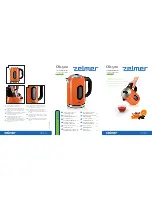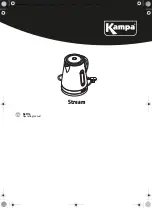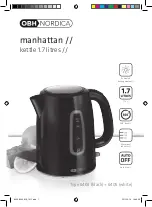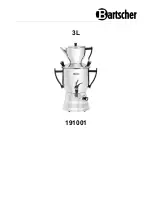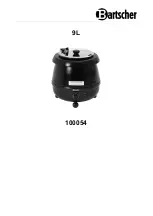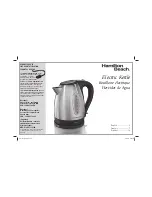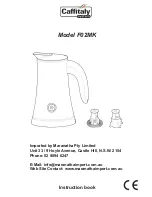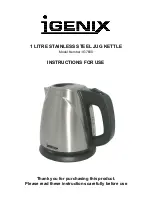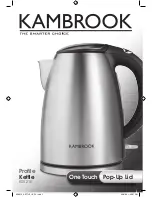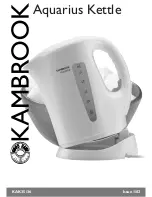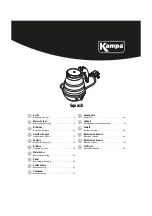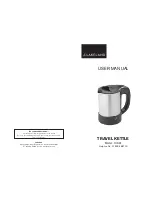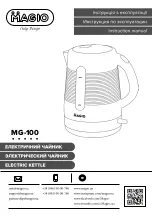
All images are for illustration purposes only. Actual products may vary.
All rights reserved.
©
SQ Professional Ltd 2016
.
SQPro Senza Electric Kettle
ImPortAnt SAfEguArdS
uSE & CArE
SQPro Senza Electric Kettle
Before using for the first time
1
Fill to
maximum
, boil, discard the water,
then rinse. Do this 3 times, to remove
manufacturing dust, etc.
Positioning
1
Put the stand on a stable, level surface.
2
Route the cable so it does not overhang,
and cannot be tripped over or caught.
3
Wind excess cable beneath the stand.
Switching on
1
Put the kettle on the stand – take care not
to spill.
2
Plug the stand into a power socket (switch
the socket on, if it’s switchable).
3
Move the switch to ON – the light will glow,
and the kettle will heat up.
Switching off
1
When the water boils, the kettle will switch
itself off, and the light will go out.
2
To switch off manually, move the switch to
OFF
.
3
Lifting the kettle off the stand will also
switch it off.
General
1
Remove the kettle from the stand before
pouring.
2
To avoid the risk of splashing, pour slowly
and do not over-tilt the kettle.
3
Do not tilt the kettle backwards – water
might get on to the control area.
4
If this happens, let the kettle dry before
use – sit it somewhere warm for 12 hours.
5
When you lift the kettle, you may see
moisture on the stand. Do not worry – it’s
the steam used to switch the kettle off
automatically, which then condenses and
escapes through vents under the kettle.
6
Discolouration
may occur on the floor of
the kettle, and is due to the bonding of the
element to the kettle floor.
Using insufficient water
1
This will shorten the life of the element.
2
A boil-dry cut-out will switch the kettle off.
3
To avoid cycling on and off, you must
remove the kettle from the stand and let it
cool down.
Care and maintenance
1
Check that the kettle is switched off.
2
Unplug the stand (switch the socket off
first, if it’s switchable), and let the kettle
cool down fully.
3
Wipe the kettle, inside and out, with a
damp cloth. You may use a little household
detergent, but if you do, rinse well to avoid
tainting the water.
4
Keep all connectors and sockets dry.
5
Do not put the kettle or stand in liquid.
6
Do not use harsh or abrasive cleaning
agents or solvents.
Descale - even in soft water areas
1
Limescale may be white, coloured, even
rusty-looking, but it is normally visible.
2
Phosphate scale is not generally visible,
but it is there, even in soft water areas.
3
All scale causes overheating, reduces the
kettle’s life, and may trigger the boil-dry
cut-out.
4
To keep your kettle in working order,
descale at least once a month.
5
Use a descaler suitable for plastic products
(all kettles have plastic parts).
6
Follow the instructions provided with the
descaler, rinse several times, then fill,
boil and discard the water, to ensure no
residues are left.
7
Products returned under guarantee with
faults due to scale will be subject to a
repair charge.





